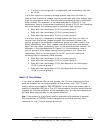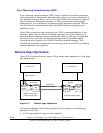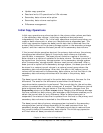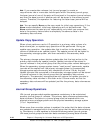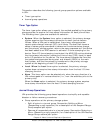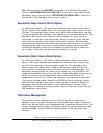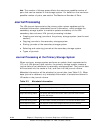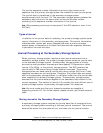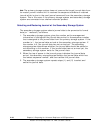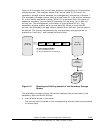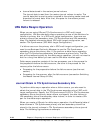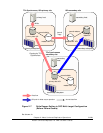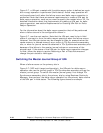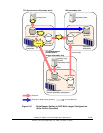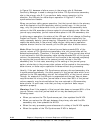
Chapter 2 About Universal Replicator Operations 2-25
Hitachi Universal Replicator for IBM /OS User’s Guide
The journal sequence number indicates the primary data volume write
sequence that the primary storage system has created for each journal group.
The journal data is transferred to the secondary storage system
asynchronously with the host I/O. The secondary storage system updates the
secondary data volume in the same order as the primary data volume
according to the sequence number information in the journal.
Note: URz processing continues uninterrupted if the SVP reboots or even if the
SVP fails.
Types of Journal
In addition to the journal data for updating, the primary storage system sends
control information to the secondary storage system. This control information
indicates when volume pair status changes and when a primary storage
system power-off sequence is initiated, and also maintain sequence numbers
in periods of low host activities.
Journal Processing at the Secondary Storage System
When a primary storage system receives a read journal command from a
secondary storage system, the primary storage system sends the journal data
to the secondary storage system. The secondary storage system’s initiator
ports act as host processor channels and issue special I/O operations, called
remote I/Os (RIOs), to the primary storage system. The RIO transfers the
journal data in FBA format using a single channel command. The primary
storage system can send several journal data using a single RIO, even if their
sequence numbers are not contiguous. Therefore, the journal data are usually
sent to the secondary storage system in a different order than the journal data
were created at the primary storage system. The secondary storage system
ensures that the journal data are applied to the secondary data volume in the
correct sequence. This method of remote I/O provides the most efficient use of
primary storage system-to-secondary storage system link resources.
Note: You must make sure that your channel extenders are capable of
supporting remote I/O. For further details, please contact your Hitachi account
team.
Storing Journal at the Secondary Storage System
A secondary storage system receives the journal data that is transferred from
a primary storage system according to the read journal command. The journal
data will be stored into the cache at first, and then into the journal volume.



